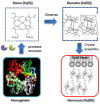The molecular mechanism of action of artemisinin--the debate continues
- PMID: 20336009
- PMCID: PMC6257357
- DOI: 10.3390/molecules15031705
The molecular mechanism of action of artemisinin--the debate continues
Abstract
Despite international efforts to 'roll back malaria' the 2008 World Malaria Report revealed the disease still affects approximately 3 billion people in 109 countries; 45 within the WHO African region. The latest report however does provide some 'cautious optimism'; more than one third of malarious countries have documented greater than 50% reductions in malaria cases in 2008 compared to 2000. The goal of the Member States at the World Health Assembly and 'Roll Back Malaria' (RBM) partnership is to reduce the numbers of malaria cases and deaths recorded in 2000 by 50% or more by the end of 2010. Although malaria is preventable it is most prevalent in poorer countries where prevention is difficult and prophylaxis is generally not an option. The burden of disease has increased by the emergence of multi drug resistant (MDR) parasites which threatens the use of established and cost effective antimalarial agents. After a major change in treatment policies, artemisinins are now the frontline treatment to aid rapid clearance of parasitaemia and quick resolution of symptoms. Since artemisinin and its derivatives are eliminated rapidly, artemisinin combination therapies (ACT's) are now recommended to delay resistance mechanisms. In spite of these precautionary measures reduced susceptibility of parasites to the artemisinin-based component of ACT's has developed at the Thai-Cambodian border, a historical 'hot spot' for MDR parasite evolution and emergence. This development raises serious concerns for the future of the artemsinins and this is not helped by controversy related to the mode of action. Although a number of potential targets have been proposed the actual mechanism of action remains ambiguous. Interestingly, artemisinins have also shown potent and broad anticancer properties in cell lines and animal models and are becoming established as anti-schistosomal agents. In this review we will discuss the recent evidence explaining bioactivation and potential molecular targets in the chemotherapy of malaria and cancer.
Figures







Similar articles
-
Considerations on the mechanism of action of artemisinin antimalarials: part 1--the 'carbon radical' and 'heme' hypotheses.Infect Disord Drug Targets. 2013 Aug;13(4):217-77. doi: 10.2174/1871526513666131129155708. Infect Disord Drug Targets. 2013. PMID: 24304352 Review.
-
Discovery, mechanisms of action and combination therapy of artemisinin.Expert Rev Anti Infect Ther. 2009 Oct;7(8):999-1013. doi: 10.1586/eri.09.68. Expert Rev Anti Infect Ther. 2009. PMID: 19803708 Free PMC article. Review.
-
Fighting drug-resistant Plasmodium falciparum: the challenge of artemisinin resistance.Clin Microbiol Infect. 2013 Oct;19(10):908-16. doi: 10.1111/1469-0691.12316. Epub 2013 Sep 3. Clin Microbiol Infect. 2013. PMID: 24033691 Review.
-
Geographic expansion of artemisinin resistance.J Travel Med. 2019 Jun 1;26(4):taz030. doi: 10.1093/jtm/taz030. J Travel Med. 2019. PMID: 30995310 Review.
-
Plasmodium falciparum K13 Mutations Differentially Impact Ozonide Susceptibility and Parasite Fitness In Vitro.mBio. 2017 Apr 11;8(2):e00172-17. doi: 10.1128/mBio.00172-17. mBio. 2017. PMID: 28400526 Free PMC article.
Cited by
-
New Perspectives on How to Discover Drugs from Herbal Medicines: CAM's Outstanding Contribution to Modern Therapeutics.Evid Based Complement Alternat Med. 2013;2013:627375. doi: 10.1155/2013/627375. Epub 2013 Mar 24. Evid Based Complement Alternat Med. 2013. PMID: 23634172 Free PMC article.
-
Ascorbic acid co-administration with artemisinin based combination therapies in falciparum malaria.Indian J Med Res. 2016 May;143(5):539-41. doi: 10.4103/0971-5916.187100. Indian J Med Res. 2016. PMID: 27487995 Free PMC article. No abstract available.
-
Antimalarial and anticancer properties of artesunate and other artemisinins: current development.Monatsh Chem. 2021;152(4):387-400. doi: 10.1007/s00706-021-02759-x. Epub 2021 Mar 30. Monatsh Chem. 2021. PMID: 33814617 Free PMC article. Review.
-
Artemisinin Action and Resistance in Plasmodium falciparum.Trends Parasitol. 2016 Sep;32(9):682-696. doi: 10.1016/j.pt.2016.05.010. Epub 2016 Jun 9. Trends Parasitol. 2016. PMID: 27289273 Free PMC article. Review.
-
Marine organisms as potential sources of natural products for the prevention and treatment of malaria.RSC Adv. 2023 Feb 2;13(7):4436-4475. doi: 10.1039/d2ra07977a. eCollection 2023 Jan 31. RSC Adv. 2023. PMID: 36760290 Free PMC article. Review.
References
-
- World Heath Organisation . The World Malaria Report. World Heath Organisation; Geneva, Switzerland: 2008.
-
- Zhang J.-F. Yang Cheng Evening News Publishing Company; 2005. A Detailed Chronological Record of Project 523 and the Discovery and Development of Qinghaosu (Artemisinin)
Publication types
MeSH terms
Substances
LinkOut - more resources
Full Text Sources
Other Literature Sources

